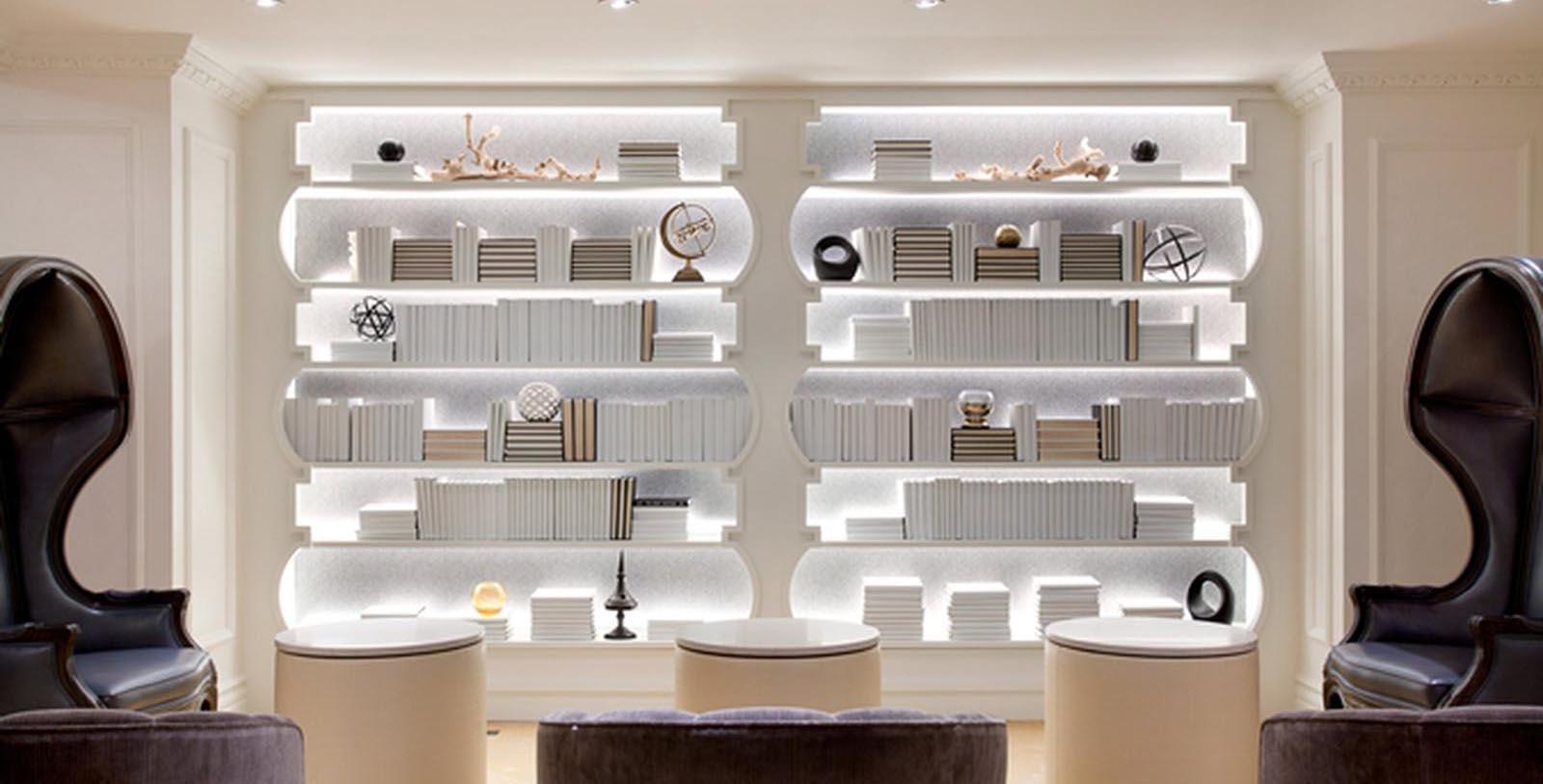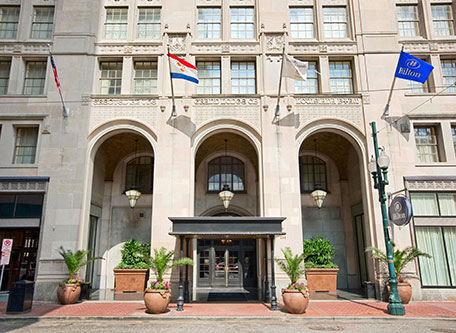Receive for Free - Discover & Explore eNewsletter monthly with advance notice of special offers, packages, and insider savings from 10% - 30% off Best Available Rates at selected hotels.
history
Discover Hilton New Orleans/St. Charles Avenue, which was once the Louisiana Masonic Temple and one of New Orleans' first skyscrapers.
Hilton New Orleans, a member of Historic Hotels of America since 2015, dates back to 1926.
VIEW TIMELINEA contributing structure within the New Orleans Lower Central Business District, the Hilton New Orleans/St. Charles Avenue has been a member of Historic Hotels of America since 2015. Its history is also quite extensive, harkening back to the very founding of Louisiana Freemasonry. In fact, the building’s origins can be specifically traced to the Grand Lodge of Free and Accepted Masons, which opened its first masonic temple at the site of the present-day Hilton New Orleans/St. Charles Avenue. The group was active in New Orleans for many years prior and its influence had grown considerably. Looking for a new headquarters, the lodge eventually leased the Commercial Exchange at 333 St. Charles Street in 1845. But the building quickly outgrew their needs as enrollment increased through the 1850s. In 1859, the members of the Grand Lodge of Free and Accepted Masons decided to relocate yet again, this time to a former train depot a few blocks away. The Freemasons intended to completely redevelop the area, but the onset of the American Civil War greatly affected their plans. The project was abandoned several years later, with the Grand Lodge of Free and Accepted Masons ultimately absorbing a couple of the surrounding buildings on Charles Avenue into the Commercial Exchange’s layout.
Still, the desire to create a new masonic temple remained strong. The Grand Lodge of Free and Accepted Masons, thus, began revisiting innovative various building blueprints throughout the early 1890s. The group eventually settled on the intricate plans of local architect James Freret, who presented an intricate design that drew inspiration from Medieval and Renaissance-era Europe. Even though Freret relied upon many different styles, he paid particularly close attention to the motifs of Gothic architecture. Indeed, Freret’s structure quickly dominated the local skyline with its gorgeous carvings, amazing brickwork, and five-story turret. Inside, Freret built a wealth of outstanding communal areas, such as libraries, meeting rooms, and office spaces. When work on the masonic lodge finally concluded in 1892, it immediately became a renowned local landmark. Some had even taken to calling the structure affectionately as “Freret’s Castle.” But Freret’s design proved to be too intricate to maintain. Its unique romanticized depiction of European Middle Age culture had also gradually fallen out of favor among the members.
Calls to recreate the masonic temple continued to mount over the following years, reaching its crescendo after World War I. As such, the Lodge’s leadership began developing its third temple during the early 1920s. They commissioned Sam Stone Jr. to supervise the project, who completely reconstructed the temple from the ground up. Work began in 1926 and lasted for several months (the labor provided by the James Stewart & Company). It was a massive undertaking, costing the Grand Lodge of Free and Accepted Masons some $3 million to complete! Nevertheless, the construction produced a stunning 18-story skyscraper that measured over 100,000 square feet in size. It contained many spectacular facilities as well, like three elegant ballrooms, a 1,000-person theater, and a sprawling ceremonial chamber called the “Grand Chapel.” Stone also recycled the previous temple’s Gothic-inspired eclectic, albeit in a more modern, nuanced form. Perhaps the most magnificent component of the building’s overall appearance was the mixture of historic cypress and pine pilings to create every single interior wall.
Debuting as the “Masonic Lodge” in 1927, the Grand Lodge of Free and Accepted Masons occupied the structure for the next several decades. But in 1992, the Freemasons decided to move one more time to another location nearby. Now vacant, the Freemasons had started to find a suitable buyer to take over the site. After months of searching, the Grand Lodge of Free and Accepted Masons eventually reached an agreement to sell the erstwhile Masonic Temple to several enterprising hoteliers. They then began an ambitions renovation that redeveloped the building into an upscale boutique hotel called the “Hotel Monaco.” The Hotel Monaco subsequently emerged as one of Louisiana’s most exclusive holiday destinations until Hurricane Katrina devastated the region in 2005. Undeterred, the owners renovated the Hotel Monaco over the next two years, transforming it into the “Hilton New Orleans/St. Charles Avenue.” The renovations were incredibly comprehensive, which truly restored the building’s terrific historical architecture back to its former glory. Today, the brilliant Hilton New Orleans/St. Charles Avenue remains one of New Orleans best hotels.
-
About the Location +
Hilton New Orleans/St. Charles Avenue is located just moments away from the Vieux Carré, otherwise known more popularly as the French Quarter. A National Historic Landmark, the French Quarter was first established in 1718 by French colonials under the direction of the Mississippi Company. These aspiring settlers were specifically led to the region by Jean-Baptiste Le Moyne de Bienville, who would go on to serve as the local colonial governor throughout much of the early 18th century. The French Crown intended for the nascent settlement to operate as an important regional port that controlled trade throughout the Mississippi Delta. After navigating the local coastline for several weeks, Bienville and his compatriots found a section of high ground above the Mississippi River that offered natural protection from flooding waters, as well as incursions against English and Spanish privateers. They named their new community “La Nouvelle-Orléans” in honor of the Duke of Orleans, a nephew of King Louis XIV.
La Nouvelle-Orléans eventually evolved into New Orleans, the capital of the French colony of Louisiana. France lost control over the city for a time during the late 18th century, when the French were forced to cede the colony to the Spanish following the Seven Years War. Yet, the Spanish gave New Orleans back to the French in 1800 at the height of the Napoleonic Wars. The town and the surrounding parishes were then part of the Louisiana Purchase, in which Emperor Napoléon Bonaparte sold 828,000 square miles of French-controlled territory in central North America to U.S. President Thomas Jefferson. The city subsequently became the capital for the new state of Louisiana in 1812, rapidly evolving into the most important port in the southern United States. This growth was offset temporarily with the outbreak of the War of 1812, with New Orleans itself becoming a battleground. It was the site of the famous Battle of New Orleans, where future president Andrew Jackson defeated the British in an incredibly lopsided victory.
New Orleans’ significance as a commercial port made it a highly valuable strategic point of interest for both the Union and Confederacy during the American Civil War. Both armies fought over the city early in the war, with the United States Navy forcing local Confederate units from the area in early 1862. It became the base for future operations by the Union in the Mississippi Delta for the duration of the conflict. Following the cessation of hostilities between the two sections in 1865, New Orleans resumed its national status as a premier port city. It even served as an integral part to the national war effort in World War II, where it became the site for the development of the crucial Higgins Boat. New Orleans has since emerged as one of the nation’s most popular tourist destinations, with millions visiting every year. The most popular attraction is the original French Quarter and its celebrated landmarks, such as Jackson Square, St. Louis Cathedral, and Bourbon Street. All of these fantastic sites wonderfully represent the original French heritage of the Vieux Carré.
-
About the Architecture +
Hilton New Orleans/St. Charles Avenue stands in downtown New Orleans today as a brilliant example of Gothic Revival architecture. Gothic Revival-style architecture itself is part of the artistic movement known as “Romanticism,” which swept through Europe and North America for much of the 19th century. This demarcated a distinctive break from the Neoclassicism of the century prior, which drew its architectural inspiration from the Greco-Roman civilizations of antiquity. The desire for the medieval design principles of Gothic Revival architecture reflected a broader trend within Western societies—particularly in European countries—to preserve the past in some meaningful way. As such, architects took to preserving the surviving buildings from the period, while also creating new ones that mirrored the aesthetic. The most common structural elements incorporated into buildings developed with Gothic Revival style were the pointed arch. This profound feature manifested in windows, doors, and rooftop gables. Yet, it also influenced the development of entire substructures, causing the creation of such features as mock parapets, conical towers, and high spires. Other characteristics associated with Gothic Revival-style architecture included a special kind of wooden trimming known as either vergeboards or bargeboards. Porches also featured turned posts or slender columns, while the roof was often deeply pitched and lined with dormers. Architects typically used this style for rural buildings set within a historic village or town, although some in the field—such as Thomas Pringle in America—chose it for commercial structures from time to time. Churches were the buildings that featured Gothic Revival style the most, as their natural layout was well-suited to showcase the best of the form.































